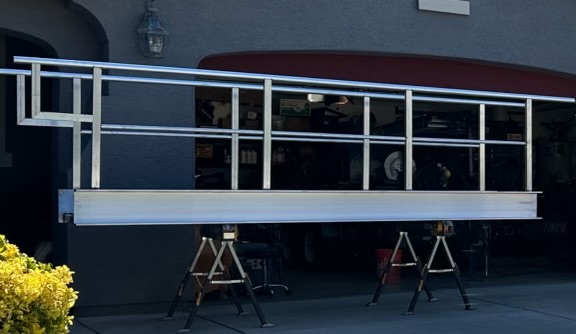Preloader Close
Mobile Welding
24 HOURS
(916) 417-5150
Field Welding Aluminum - Mobile Welding
- Home
- Field Welding Aluminum
Car Repairing

- April 5, 2024
- By: admin
- Mobile Welding, Northern California Welding Services, Sacramento Welding Services, Stainless Steel Welding, Steel Welding
- Comments: 0
Wright Welding | Mobile Welding | Aluminum Welding | Steel Welding | Stainless Steel Welding | Sacramento | Northern California
Field Welding Aluminum
Making Smart Choices in Challenging Conditions
Field welding aluminum can be a daunting task, especially when faced with adverse weather conditions. The challenges of welding outdoors, such as rain and wind, can significantly impact the quality and safety of the weld. In such situations, making informed decisions becomes crucial to ensure the success of the welding operation. This article explores the considerations and strategies involved in tackling field welding of aluminum in unfavorable weather conditions, emphasizing the importance of moving indoors or creating suitable protection from the elements.
Aluminum welding demands precision and control, factors that can be compromised in inclement weather. Rain poses a significant threat, as moisture can contaminate the welding area, leading to poor weld quality and structural integrity. Additionally, the presence of water can cause erratic arc behavior and potential electrical hazards for the welder. Similarly, strong winds can disrupt shielding gas coverage, affecting the weld’s appearance and strength.When faced with unfavorable weather conditions, the first consideration for welders should be whether to proceed with outdoor welding or seek shelter indoors. While outdoor welding may seem feasible at times, the risks associated with compromising weld quality and safety cannot be overlooked. Thus, prioritizing the relocation of the welding operation to an indoor facility becomes paramount.

Moving indoors offers several advantages, including protection from the elements, a controlled environment, and improved visibility. Indoor facilities provide shelter from rain and wind, creating a conducive setting for optimal welding conditions. Moreover, controlled environments help maintain consistent temperatures, reducing the likelihood of thermal expansion and contraction issues during welding.
However, in some situations, relocating indoors may not be feasible due to logistical constraints or project requirements. In such cases, welders must explore alternative strategies to mitigate the impact of adverse weather conditions. One option is to erect temporary shelters or enclosures around the welding area to shield it from rain and wind. Temporary shelters can be constructed using readily available materials such as tarps, tents, or portable canopies. These structures provide a barrier against the elements while allowing for adequate ventilation and mobility.
Welders should ensure that the shelter is securely anchored to prevent displacement by strong winds and that sufficient clearance is maintained around the welding operation to prevent fire hazards. In addition to providing protection from rain and wind, welders must also address other factors that can affect welding performance, such as humidity and temperature fluctuations. High humidity levels can lead to moisture accumulation on the surface of the aluminum, resulting in weld defects and porosity.
Likewise, extreme temperatures can cause thermal distortion and stress, affecting the weld’s structural integrity. To counteract these challenges, welders can implement pre-welding procedures such as preheating the aluminum to reduce moisture content and minimize thermal shock. Additionally, the use of humidity and temperature monitoring devices can help assess environmental conditions and make necessary adjustments to the welding parameters.
Field welding aluminum in adverse weather conditions requires careful planning and decision-making to ensure optimal results. Whether opting to relocate indoors or creating protective measures outdoors, welders must prioritize safety, quality, and efficiency. By considering the impact of rain, wind, and other environmental factors, and implementing appropriate strategies, welders can overcome the challenges of field welding aluminum and achieve successful outcomes.
